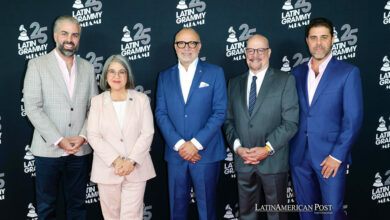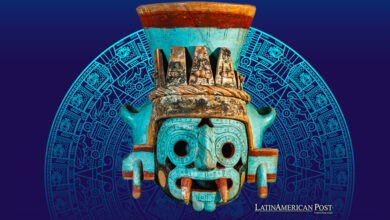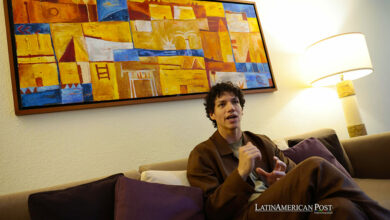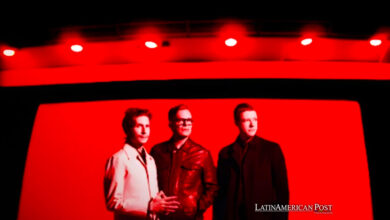Argentina: New Epicenter of Urban Music?
Argentina's music industry seems to be at the forefront of urban music. What is happening? .

Photos: IG-bizarrap, IG-nathypeluso, IG-thunder
LatinAmerican Post | Ariel Cipolla
Listen to this article
Leer en español: Argentina: ¿nuevo epicentro de la música urbana?
For many years, Argentina was one of the most popular countries in terms of rock, popularly known as "Argentine national rock". It was the first Ibero-American country, which, after the Anglo-Saxons, included several genres derived from rock and roll with local elements.
For this reason, from the 1950s until the mid-2000s, national rock was on the rise. Groups such as Soda Stereo, Los Piojos, Callejeros, Patricio Rey y sus Redonditos de Ricota and artists such as Luis Alberto Spinetta, Charly García or Fito Páez achieved great recognition in the country and in Latin America.
However, in recent years, the industry seems to have turned towards the urban genre. This change happened very quickly, to the point that, at present, Argentina appears as one of the greatest Latin exponents of urban music that we listen to.
Read also:They Rule: The Great Moment of Women in the Music Industry
The Argentine trap: new Latin exponent?
To understand this phenomenon, it is worth mentioning a very important element: the Battle of the Roosters. This competition, which puts different rappers compete in the streets, began to have enormous relevance in the 2010s. At first, it was a niche, but it quickly began to go viral on the Internet.
Thus, some artists, who initially dedicated themselves to freestyle, decided to reach the urban industry and launch their own songs. Perhaps the best known today is Duki, who quickly oriented his music towards the trap. His songs have millions of reproductions on a global scale and he became an undisputed benchmark of the genre.
Another who also started with freestyle was Paulo Londra, who in 2017 began to compete. However, when he ventured into urban music, he managed to break incredible records. For example, "Nena maldición" and "Adán y Eva" were the first Argentine songs to exceed 1,000 million views on the platform.
— bzrp (@bizarrap) April 24, 2022
Another figure also emerged is: Bizarrap. This is a music producer who became famous for his "Sessions", spaces in which he invites different exponents of urban music to generate the tracks, which they will then sing. Its format was a real success.
For example, the recent Session #23 with Paulo Londra got 44 million views in 7 days. Another of the latest, with Residente, is close to achieving 100 million views. Then there are other versions, such as Snow Tha Product (166 million), Anuel AA (45 million), or Nicky Jam (127 million).
In other words, Bizarrap also manages to have a lot of contact with the urban exponents of the continent, although it always prioritizes the local. And it is that there is one of the secrets of success: the genre not only stayed with these figures, but other really successful ones are constantly appearing.
Singers like Nicki Nicole, L-Gante, Nathy Peluso, María Becerra, Wos, Trueno, Khea, Ecko, Neo Pistea, Cazzu, Dillom or Tiago PZK have millions of views on most of their songs. Furthermore, while all of this music can be considered “urban”, each has adopted its own sub-genres, demonstrating the enormous musical variety of the artists.
What does all this lead to? Simple: that at almost every moment there is an Argentine artist who heads the top 10 of the most listened to songs locally, regionally, and even, sometimes, on the entire planet. Now, it is worth mentioning that it is a relatively new phenomenon and that most of these artists do not have more than 5 years of experience.
That is where the "Argentine urban movement" can find competition with respect to other countries. Mainly, Colombia and Puerto Rico, which have more experienced artists behind them. For example, Maluma, Shakira, J Balvin, Sebastián Yatra, Karol G, Arcángel, Residente, Bad Bunny, Daddy Yankee or Rauw Alejandro, among others.
????????????????????????Argentina ???? pic.twitter.com/0VNl1KYBEy
— Daddy Yankee ???? (@daddy_yankee) April 22, 2022
While all of these artists garner millions of views on their songs and their releases are huge successes (as the worldwide ticket sales for Daddy Yankee's “Last Tour” demonstrated), there is one substantial difference: gender. That is to say, both belong to the urban movement, but they do not seek to be the same music.
While the Colombian and Puerto Rican urban genre seems to point more toward reggaeton, Argentina has a trap-based orientation. Yes, it is true that there are many songs based on reggaeton and other genres, such as rap, hip-hop, or cumbia, but Argentine urban music is generating its own identity around the trap.
So, this means that Argentine artists do not come to compete with others, but rather are successfully coexisting. An example of this is that Argentine artists tend to establish a good relationship with Colombians or Puerto Ricans. Instead, we have already seen how some figures from both countries discuss via social networks (such as J Balvin and Residente).
Therefore, the urban music of Argentina is experiencing an excellent present, but we will have to wait to see what will happen in the future. Thus, we can enjoy both it and the classic and modern songs of Colombian and Puerto Rican reggaeton.





